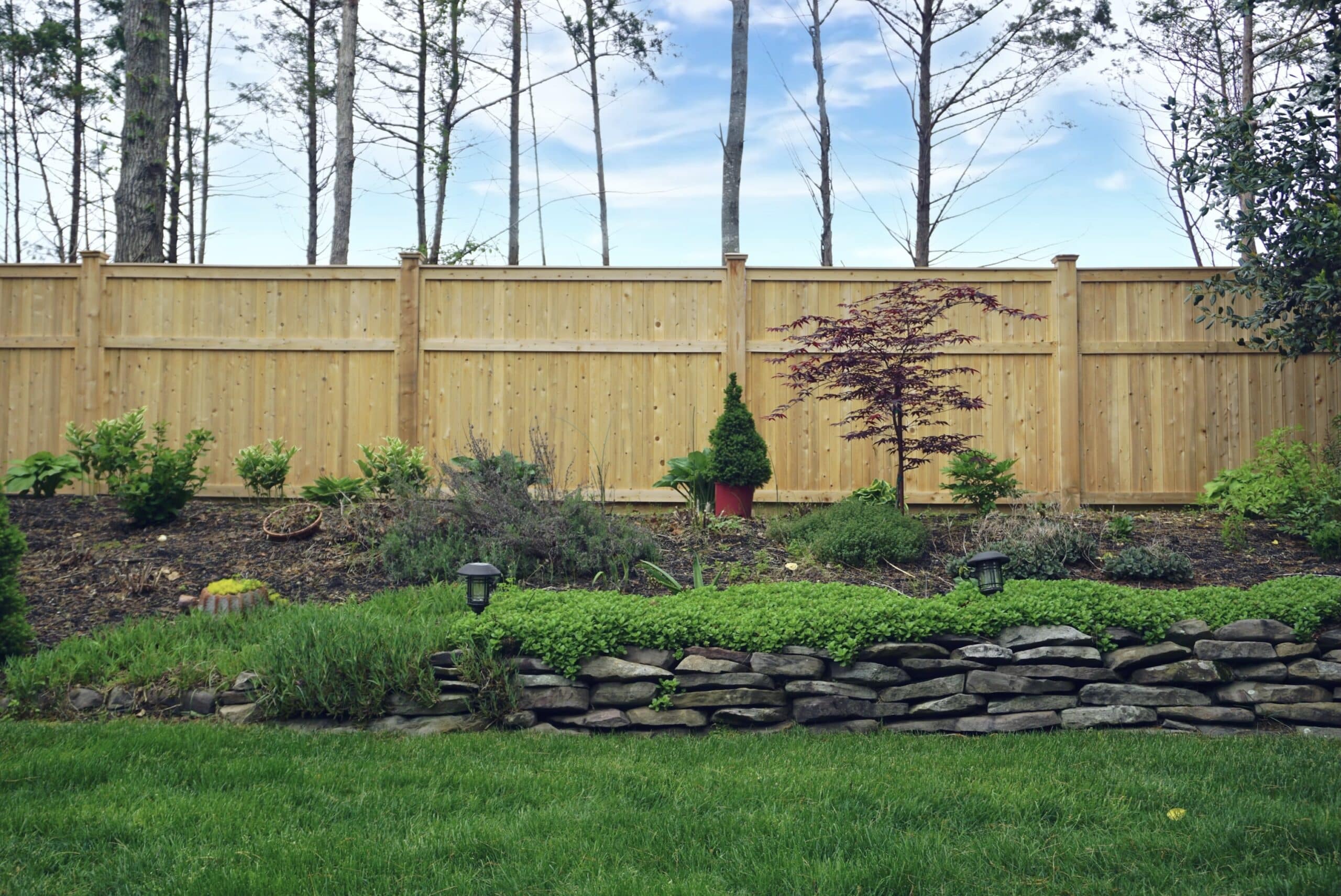
Is Cedar Fencing or Pressure Treated Fencing preferable for my yard?
Cedar fencing and pressure-treated fencing are both popular choices for outdoor fencing projects, but they have some differences. To some degree, this is an individual choice, but there are benefits to choosing cedar fencing over pressure treated.
Cedar Is Natural
Cedar wood is not treated with chemicals. On the other hand, pressure-treated wood is chemically treated to resist rot, decay, and termites. The pressure treatment process involves forcing a mixture of chemicals into the wood, which fills the cells and makes the wood more resistant to damage. Years ago, other chemicals were used, such as chromated copper arsenate, which contained arsenic. That chemical has since been banned. The most common chemicals used for pressure-treatment currently are alkaline copper quat and copper azole. Thus, if you prefer natural products in your yard, or need fencing around a garden, cedar fencing is a recommended option.
Cedar Is Durable
Cedar and pressure treated wood are both durable and long-lasting. Both can withstand exposure to the elements and resist rot, decay, and termite damage for many years. This is particularly the case when compared to pine woods, such as Spruce. However, as noted above, the advantage of cedar is that it is durable without the need for chemicals. Cedar is naturally resistant to rot, decay, and termites. It is a type of softwood that comes from species of coniferous trees, such as the western red cedar. It is known for its natural oil which acts as a natural preservative and provides resistance to insects and decay.
Cedar Is Affordable
Cedar is an affordable option. It is much less expensive than exotic woods, and though more expensive than Spruce, it is often comparable to pressure-treated fencing. The price of wood, and prices of individual species vary, so at times cedar may cost more, and other times pressure treated may cost more. Cedar, while it is a significant investment, is indeed an affordable option.
Cedar Wood Grain Is Appealing
Cedar wood has a beautiful natural color and grain. It is often used for projects other than fencing, such as decking and siding. It also weathers to an appealing silver hue. All outdoor wood will ‘weather’ if it is not stained. That means the wood will lose its natural color and transition to a grey color. Some wood species weather darker than others. Cedar fence weathers to a lighter, more appealing silver than pressure treated fence. Further, due to the chemicals in the treating process, pressure treated wood may have a greenish hue, whereas that is not the case with cedar.
In summary, cedar fencing has distinct advantages over pressure treated fencing. Both are strong and durable fences, and both will look great when newly installed. However, cedar tends to be the preferred option when choosing a wood fence for your yard. There are many shapes and styles of cedar fencing. Call Carl’s today to determine which cedar fence is best for your backyard!



